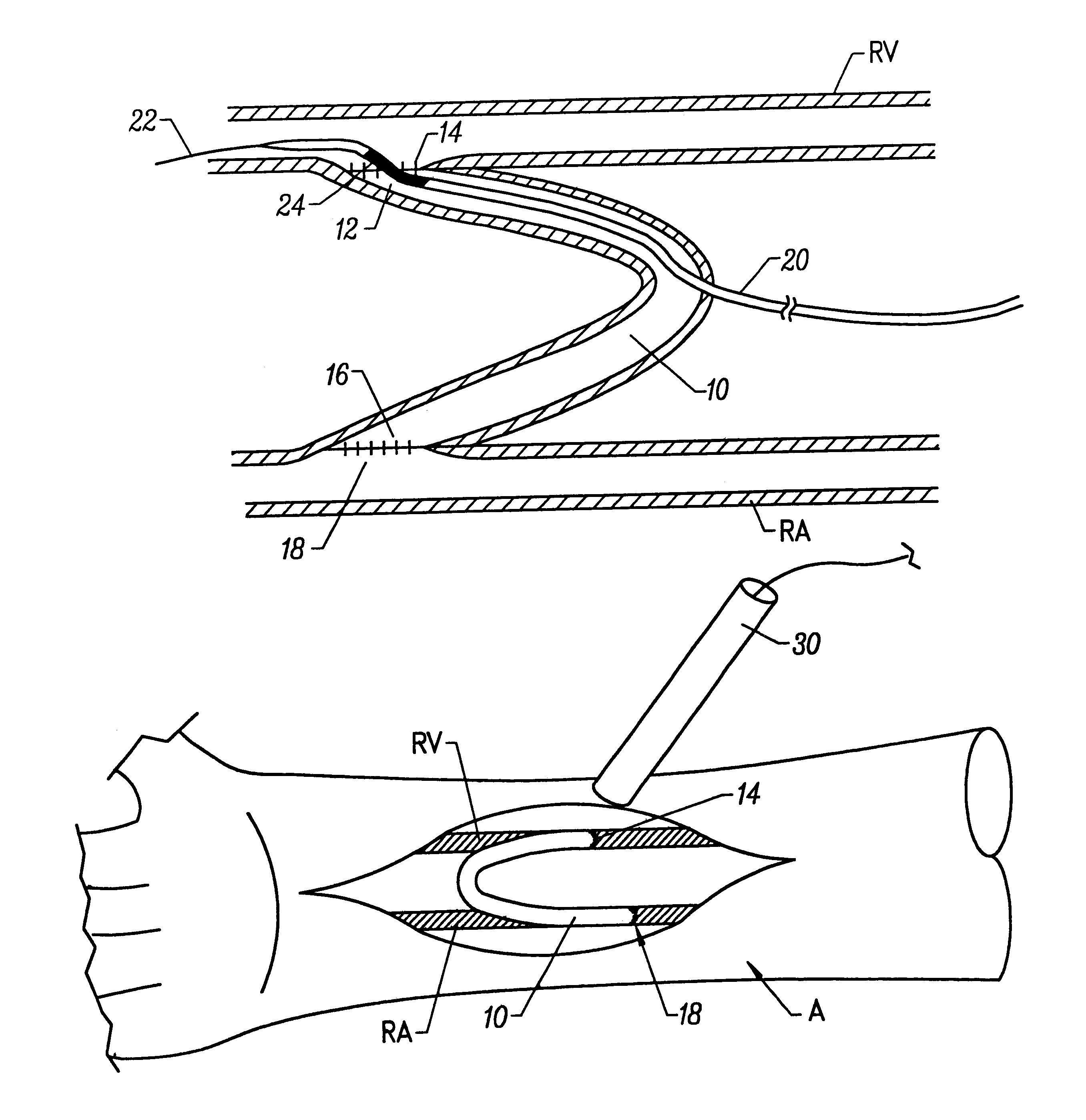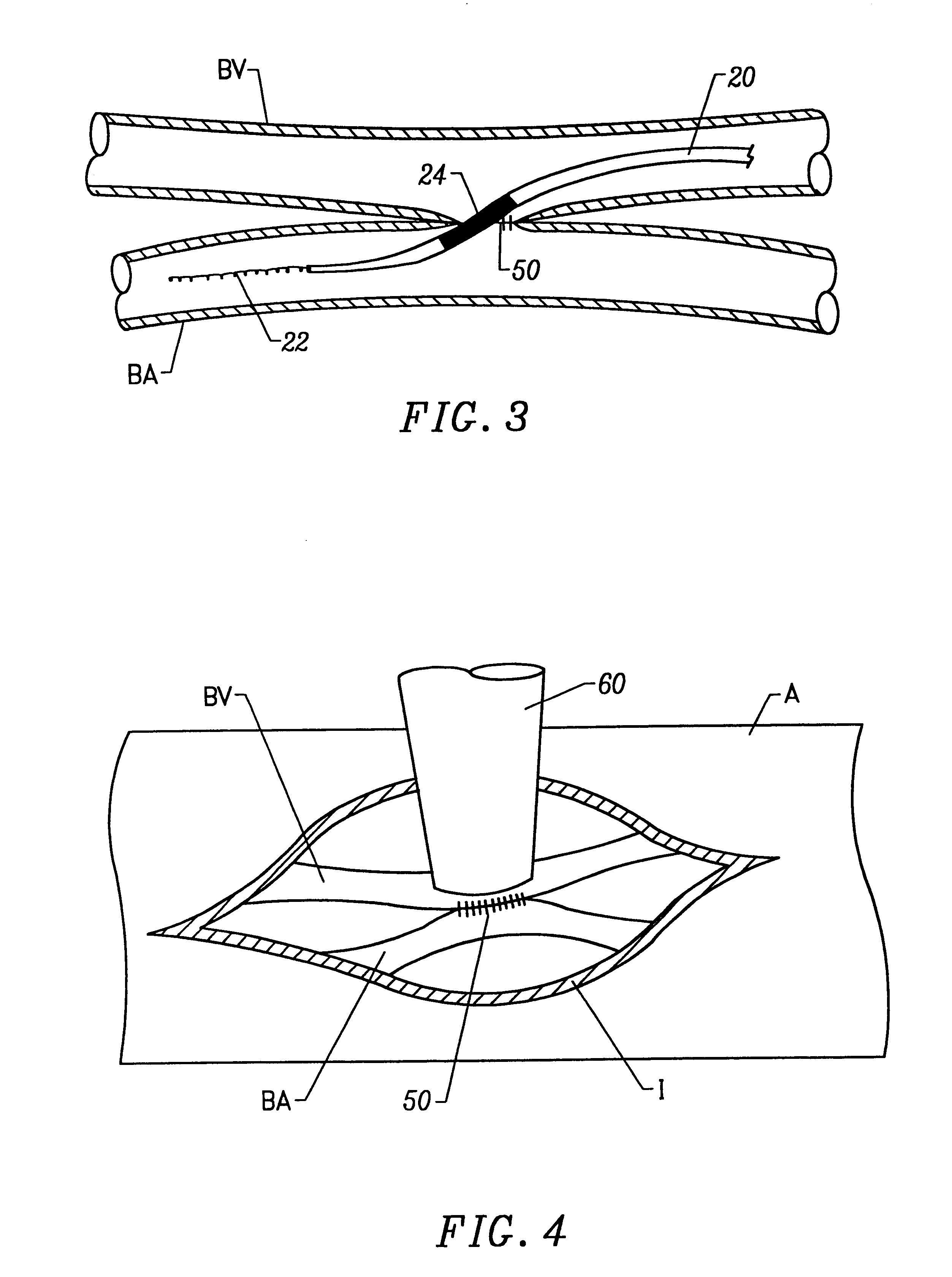Treatment according to the present invention is effected by exposing the anastomotic junction to
vibrational energy at a
mechanical index and for a time sufficient to inhibit hyperplasia of
smooth muscle cells within the neointimal layer of the
blood vessel. Surprisingly, it has been found that the strength of
vibrational energy (as measured by the
mechanical index) and the duration of the treatment (as measured by elapsed
treatment time,
duty cycle, and
pulse repetition frequency (PRF)) can be selected to provide highly effective hyperplasia inhibition in the neointimal layer without significant damage to surrounding tissues or structures within the
blood vessel(s) and / or the anastomotic junction itself. In particular, by exposing an anastomotic junction at risk of
neointimal hyperplasia to a vibrational energy having a mechanical index in the range from 0.1 to 50, preferably from 0.2 to 10, and more preferably from 0.5 to 5, for a
treatment time in the range from 10 seconds to 1000 seconds, preferably from 30 seconds to 500 seconds, and more preferably from 60 seconds to 300 seconds, the proliferation of
vascular smooth muscle cells in the neointimal layer of the
artery can be reduced by at least 2% (in comparison with untreated controls) after seven days, often at least 4% , and sometimes 6% or greater. The resulting reduction in hyperplasia
mass after 28 days will typically be at least 10%, usually at least 20%, and preferably at least 30%. Such inhibitions can be achieved without significant
necrosis of the
smooth muscle cells.
The methods of the present invention will preferably be performed under conditions which cause little or no
cavitation within the smooth
muscle cells and other cells within or near the treatment region. While the
initiation of
cavitation will be governed to a large extent by the power and mechanical index of the vibrational energy, the presence of
cavitation nucleii, such as gas
microbubbles, can also contribute to cavitation. Thus, the methods of the present invention will preferable be performed in the absence of introduced
microbubbles and / or other cavitation nucleii. Moreover, the treatment conditions of the present invention will result in little or no inhibition of migration of smooth
muscle cells into the neointimal layer. Instead, the migration will be generally normal, but the migrated cells will have a quiescent
phenotype rather than the proliferative
phenotype associated with the formation of
neointimal hyperplasia. In their proliferative
phenotype,
vascular smooth muscle cells not only divide rapidly but also excrete
extracellular matrix which accounts for most of the volume of the neointimal layer responsible for hyperplasia. Quiescent smooth
muscle cells divide less rapidly, do not secrete significant amounts of
extracellular matrix, and promote healing and reformation of an intact endothelial layer over the neointimal layer. Additionally, the duty cycles and pulse repetition frequencies of the treatment will be selected to limit the heating within the neointimal layer to a temperature rise below 10.degree. C., preferably below 5.degree. C., and more preferably below 2.degree. C. Such limited temperature rise further assures the viability and normalcy of the treated cells to enhance healing and re-endothelialization of the neointimal layer in a rapid manner.
The duration of treatment is defined as the actual time during which vibrational energy is being applied to the
arterial wall. Duration will thus be a function of the total elapsed
treatment time, i.e., the difference in seconds between the
initiation and termination of treatment; burst length, i.e., the length of time for a single burst of vibrational energy; and
pulse repetition frequency (PRF). Usually, the vibrational energy will be applied in short bursts of
high intensity (power) interspersed in relatively long periods of no excitation or energy output. An
advantage of the spacing of short energy bursts is that heat may be dissipated and
operating temperature reduced.
 Login to View More
Login to View More  Login to View More
Login to View More 


